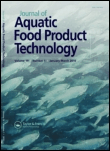
Journal of Aquatic Food Product Technology
Scope & Guideline
Advancing aquatic innovation for a sustainable future.
Introduction
Aims and Scopes
- Aquatic Food Processing Technologies:
Research on innovative processing methods for aquatic food products, including thermal, non-thermal, and preservation technologies that enhance product safety and quality. - Quality Assessment and Enhancement:
Studies focused on evaluating and improving the sensory, nutritional, and microbiological qualities of aquatic foods through various interventions and processing techniques. - Biochemical and Nutritional Studies:
Investigations into the biochemical composition, nutritional value, and health benefits of various aquatic species and their by-products. - Utilization of By-products:
Research on the valorization of waste and by-products from the seafood industry, focusing on their potential applications in food products and other industries. - Food Safety and Microbiology:
Studies addressing food safety issues, including microbial contamination, spoilage mechanisms, and the application of preservatives and natural extracts to enhance food safety. - Functional Ingredients and Additives:
Research exploring the incorporation of functional ingredients, such as bioactive compounds from marine sources, into food products to enhance health benefits. - Sustainability in Aquaculture and Fisheries:
Investigations aimed at promoting sustainable practices in aquaculture and fisheries, including the impact of environmental factors on aquatic food quality.
Trending and Emerging
- Innovative Processing Technologies:
There is a growing trend in research focusing on innovative processing technologies such as ultrasound, high-pressure processing, and other non-thermal methods that improve product quality and safety. - Bioactive Compounds and Functional Foods:
An increasing emphasis on the extraction and application of bioactive compounds from aquatic sources, aiming to develop functional foods that promote health and well-being. - Sustainability and Eco-friendly Practices:
Research addressing sustainable practices in aquaculture and fisheries is on the rise, with a focus on minimizing environmental impact and promoting responsible sourcing. - Food Safety Innovations:
Emerging studies are increasingly focused on novel methods for ensuring food safety, including the use of natural preservatives and advanced detection techniques for contaminants. - Nutritional Enhancement of Aquatic Products:
There is a notable trend towards enhancing the nutritional profiles of aquatic products through fortification with functional ingredients, reflecting a growing consumer demand for health-oriented food options. - Utilization of Marine Resources:
Research exploring the potential of underutilized marine species and by-products is gaining traction, highlighting the importance of resource efficiency and waste reduction in the seafood industry.
Declining or Waning
- Traditional Preservation Methods:
There is a noticeable decline in research focused on traditional preservation methods such as salting and smoking, likely due to the growing interest in modern, innovative preservation techniques that offer better quality and safety. - General Aquatic Species Studies:
Research that broadly addresses aquatic species without specific applications or technological advancements is waning, as the journal emphasizes more targeted studies that contribute to processing and product development. - Heavy Metal and Contaminant Studies:
While still relevant, there is a reduced frequency of studies specifically targeting heavy metals and contaminants in aquatic foods, possibly due to the increased regulatory measures and improved practices in seafood safety. - Historical and Cultural Aspects of Aquatic Foods:
Research that focuses on historical, cultural, or traditional aspects of aquatic food consumption is becoming less prominent, as the journal shifts towards more scientific and technological contributions.
Similar Journals
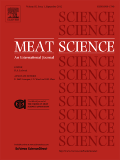
MEAT SCIENCE
Innovating for a Healthier Meat IndustryMEAT SCIENCE is a premier peer-reviewed journal dedicated to the exploration of the science of meat and meat products, contributing significantly to the fields of food science and technology. Published by Elsevier Science Ltd, this esteemed journal has been in circulation since 1977 and is recognized for its rigorous standards and impactful research, as evidenced by its Q1 category ranking in Food Science for 2023 and a notable 96th percentile ranking in Agricultural and Biological Sciences. The journal fosters innovative discussions and dissemination of cutting-edge research, covering a diverse range of topics including meat quality, safety, technology, and consumer preferences. With no open access options, MEAT SCIENCE caters to a dedicated audience of researchers, professionals, and students, serving as a vital resource for advancing knowledge and practices within the global meat industry. By continually pushing the boundaries of meat science, this journal plays a crucial role in shaping future research and industry standards.

Journal of Food Science and Technology-Ukraine
Advancing Food Innovation for a Sustainable FutureJournal of Food Science and Technology-Ukraine, published by the Odesa National University of Technology, stands as a pivotal platform dedicated to the dissemination of high-quality research in the field of food science and technology. With its open access policy established in 2014, the journal fosters global knowledge sharing and accessibility, enabling researchers, professionals, and students to access critical findings and advancements in food technology without barriers. The journal's commitment to publishing innovative studies, reviews, and case analyses reinforces its role in addressing contemporary challenges in food safety, preservation, processing, and nutritional quality. With ISSN 2073-8684 and E-ISSN 2409-7004, it serves as a valuable resource for the academic community, supporting the advancement of food science knowledge and its practical applications.

FOOD SCIENCE AND BIOTECHNOLOGY
Advancing the Future of Food and BiotechnologyFOOD SCIENCE AND BIOTECHNOLOGY, published by the Korean Society of Food Science & Technology (KOSFOST), stands as a prominent peer-reviewed journal dedicated to advancing knowledge in the fields of food science, biotechnology, and applied microbiology. With ISSN 1226-7708 and E-ISSN 2092-6456, this journal serves as a pivotal platform for disseminating high-impact research from South Korea and beyond, reflecting a robust Q2 ranking in multiple categories including Applied Microbiology and Biotechnology, Biotechnology, and Food Science as of 2023. The journal's influence is further emphasized by its positions in various Scopus ranks, where it showcases a commendable percentile ranking in Agricultural and Biological Sciences and Biochemistry. Although access options remain limited, the journal’s objectives revolve around the publication of innovative research, fostering interdisciplinary collaboration, and facilitating the exchange of ideas among a diverse community of researchers, professionals, and students. Whether you are involved in food technology, microbial biotechnology, or nutritional sciences, FOOD SCIENCE AND BIOTECHNOLOGY are instrumental in shaping the future of these critical fields, propelling advancements that enrich our understanding of food systems and health.

Food Production Processing and Nutrition
Elevating understanding of food's role in health and wellbeing.Food Production Processing and Nutrition, published by SpringerNature, stands at the forefront of advancing knowledge in the vibrant fields of food science, nutrition, and public health. This esteemed Open Access journal, operational since 2019, plays a pivotal role in disseminating breakthrough research that intersects food production processes with nutritional insights, making it an invaluable resource for researchers, professionals, and students alike. With a commendable 2023 impact factor reflecting its robust scholarly contributions — Q1 in Food Science and Q2 in both Nutrition and Dietetics and Public Health, Environmental and Occupational Health — the journal not only emphasizes the importance of innovative food processing methods but also addresses pressing nutritional challenges faced globally. Located in the United Kingdom, it claims an impressive Scopus ranking, with a notable percentile standing across various categorical metrics. As such, Food Production Processing and Nutrition is essential for anyone aiming to deepen their understanding of how food systems impact public health through effective processing and nutritional strategies.
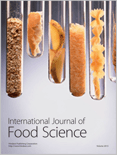
International Journal of Food Science
Empowering Research in Food Safety and NutritionThe International Journal of Food Science, published by HINDAWI LTD, stands as a crucial platform for advancing knowledge within the realm of food science. Established in 2013, this Open Access journal based in Egypt has garnered significant recognition, achieving an impressive Q2 classification in the 2023 Food Science category, which reflects its commitment to quality and impactful research. With a Scopus rank of #88 out of 389 in Agricultural and Biological Sciences and placing in the 77th percentile, this journal serves as an essential resource for researchers, professionals, and students dedicated to innovative developments and scientific exploration in food science. The journal not only provides unrestricted access to valuable research but also aims to foster collaboration and dissemination of knowledge on critical issues affecting food safety, nutrition, and technology. For those looking to keep abreast of the latest advancements, the International Journal of Food Science is certainly an indispensable addition to their academic pursuits.

FOOD TECHNOLOGY AND BIOTECHNOLOGY
Bridging Knowledge and Practice in Food TechnologyFOOD TECHNOLOGY AND BIOTECHNOLOGY is a distinguished peer-reviewed journal published by the Faculty of Food Technology and Biotechnology, University of Zagreb, Croatia. Since its inception in 1993, this Open Access journal has become a crucial platform for disseminating innovative research in the fields of food science, biotechnology, and chemical engineering. With a commendable impact factor and consistent Q2 and Q3 rankings across multiple categories—including Biotechnology, Food Science, and Industrial Engineering—this journal not only fosters academic discussions but also addresses real-world challenges in food production, safety, and sustainability. As it converges its thematic scope from 1996 to 2024, FOOD TECHNOLOGY AND BIOTECHNOLOGY remains committed to advancing knowledge through high-quality research and interdisciplinary collaboration, making it an essential resource for researchers, professionals, and students seeking to stay at the forefront of food innovation and biotechnology.
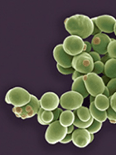
Annual Review of Food Science and Technology
Advancing the Frontiers of Food ScienceThe Annual Review of Food Science and Technology, published by ANNUAL REVIEWS, is an esteemed journal dedicated to advancing the knowledge within the field of food science. With an impressive Q1 ranking in the Food Science category, and ranking as #6 out of 389 in the Scopus Agricultural and Biological Sciences category, the journal serves as a vital resource for researchers, professionals, and students. This publication encapsulates comprehensive reviews and cutting-edge research, helping to bridge the gap between research and practical application. Though it does not offer Open Access, it provides valuable insights into various aspects of food science from 2010 to 2024, ensuring that its readership stays at the forefront of emerging trends and innovations. The journal's focus on high-quality, peer-reviewed articles makes it a critical platform for scholars looking to deepen their understanding and contribute to this rapidly evolving field.
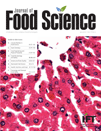
JOURNAL OF FOOD SCIENCE
Pioneering Insights in Culinary Science and TechnologyJOURNAL OF FOOD SCIENCE, published by Wiley, is a premier journal dedicated to advancing the field of food science, bridging the gap between fundamental research and practical application. With an impressive impact factor reflecting its authoritative status, the journal is ranked in the Q1 quartile for Food Science in 2023 and boasts a Scopus ranking of #71 out of 389, placing it in the 81st percentile within Agricultural and Biological Sciences. First launched in 1936, the journal continues to serve as an essential platform for researchers, professionals, and students to disseminate innovative studies and reviews that address critical issues in food quality, safety, and technology. While not currently offering open access, its rigorous peer-review process ensures the dissemination of high-quality and impactful research. Researchers engaged in the vital disciplines of food science will find this journal indispensable for keeping abreast of cutting-edge developments in the field.
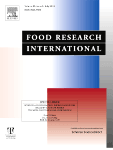
FOOD RESEARCH INTERNATIONAL
Uncovering Insights for a Sustainable Food FutureFOOD RESEARCH INTERNATIONAL is a premier academic journal published by ELSEVIER, specializing in the field of Food Science. With an impressive impact factor and ranked Q1 in the 2023 category quartiles, it stands at the forefront of research, positioned 17th out of 389 in the Scopus ranking for Agricultural and Biological Sciences, attaining a commendable 95th percentile. The journal publishes high-quality, peer-reviewed articles that cover a broad spectrum of topics, including food safety, quality control, nutrition, and biotechnology, making it an invaluable resource for academics, industry professionals, and students alike. As FOOD RESEARCH INTERNATIONAL seeks to enhance understanding and advance technologies related to food, it encourages innovative perspectives and interdisciplinary research. The journal, active from 1992 and continuing through 2024, is an essential platform for disseminating vital findings and fostering collaboration within the global food science community.
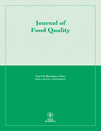
JOURNAL OF FOOD QUALITY
Innovative Research for a Healthier Food FutureThe Journal of Food Quality, an esteemed publication under Wiley-Hindawi, stands as a vital resource in the dynamic field of Food Science, established since 1977 and operating under an Open Access model since 2017. With its seat in the United Kingdom, this journal focuses on delivering high-quality research and insights pertaining to food safety, risk management, and quality assurance, reflected in its impressive Q2 ranking in both Food Science and Safety, Risk, Reliability and Quality categories in 2023. Researchers and professionals will find the journal’s contributions indispensable, particularly given its Scopus rankings that place it in the top echelons of its fields, highlighting its impact and relevance. By fostering an environment of knowledge sharing, the Journal of Food Quality not only enhances academic dialogue but also supports innovation and best practices in food research and industry applications.